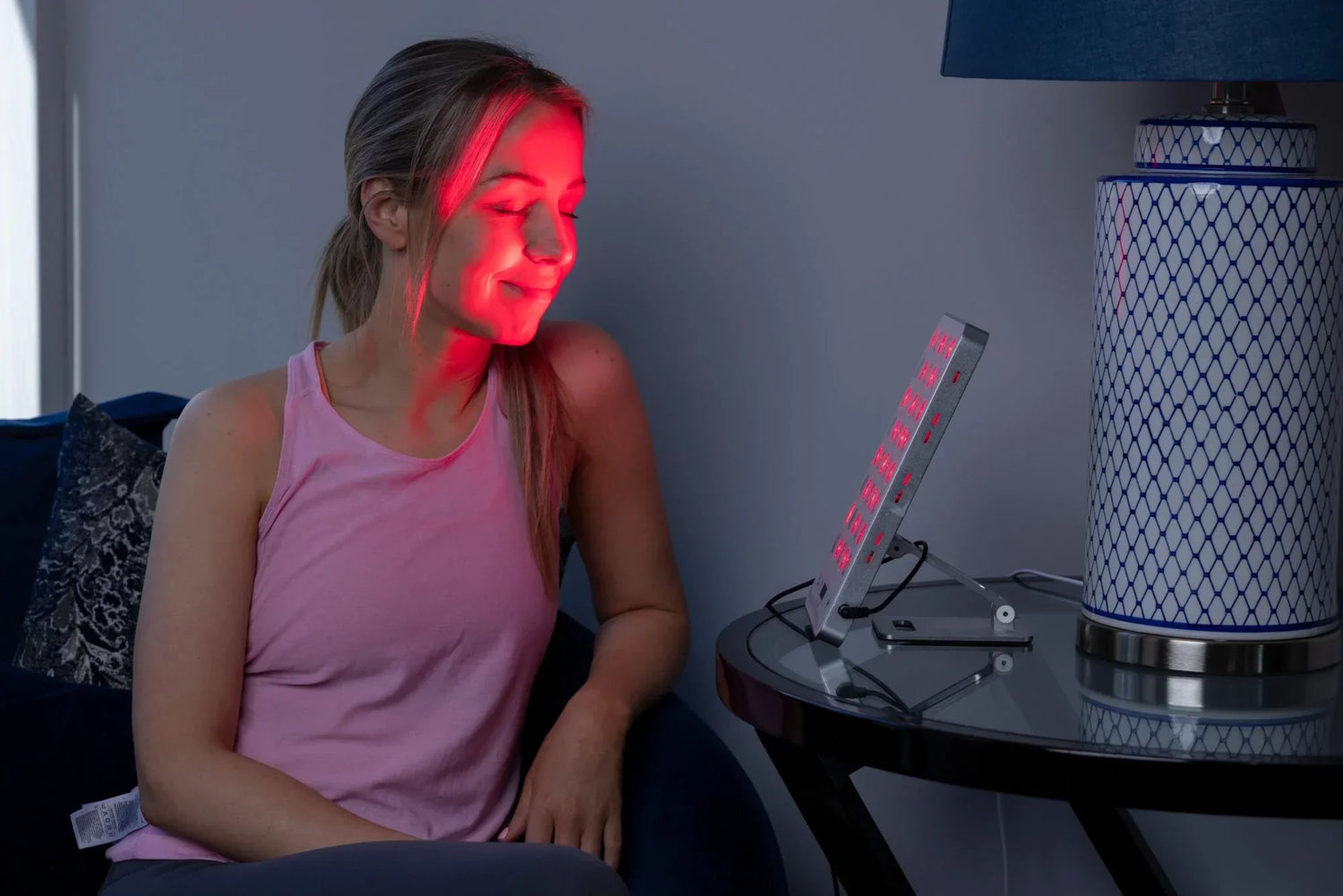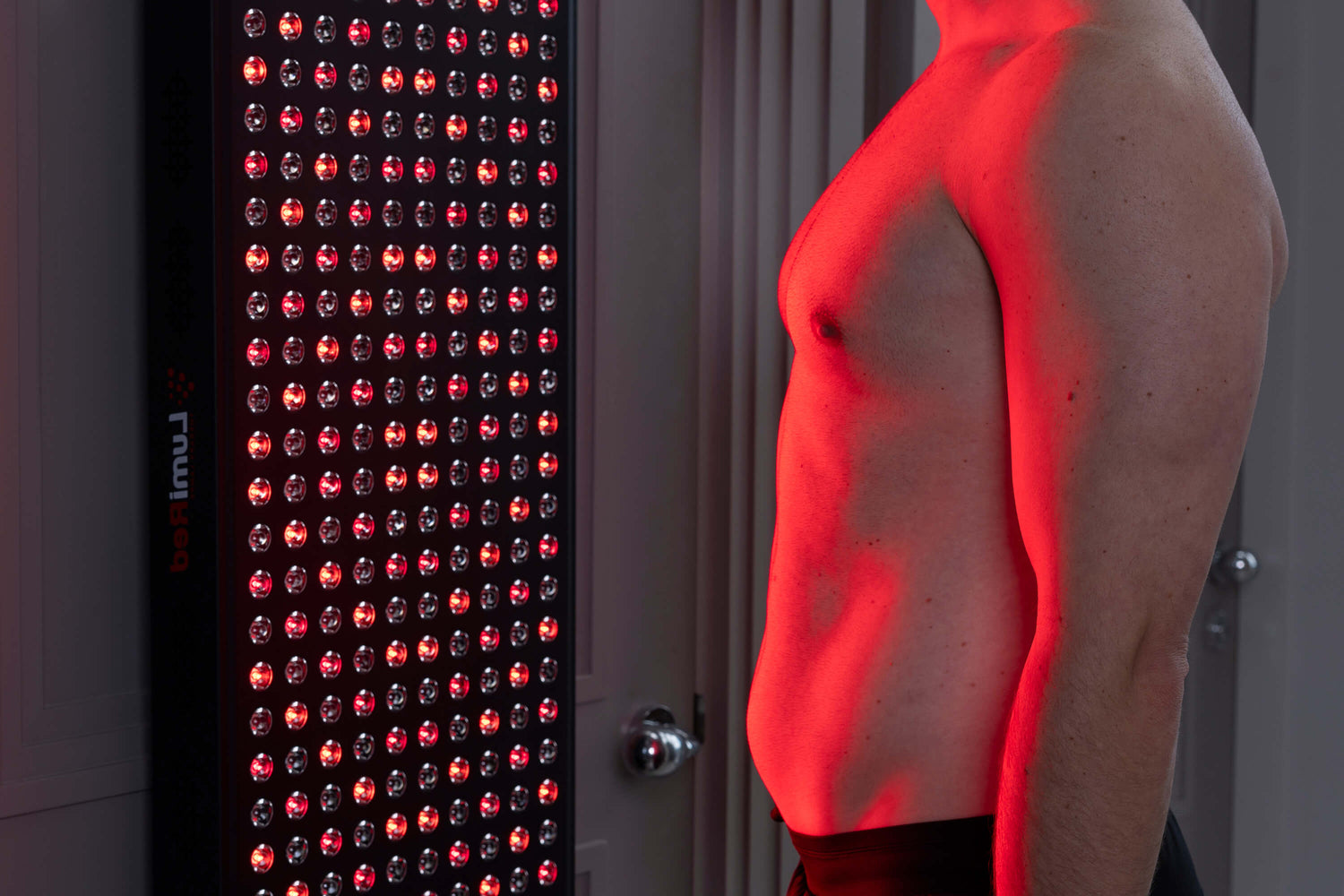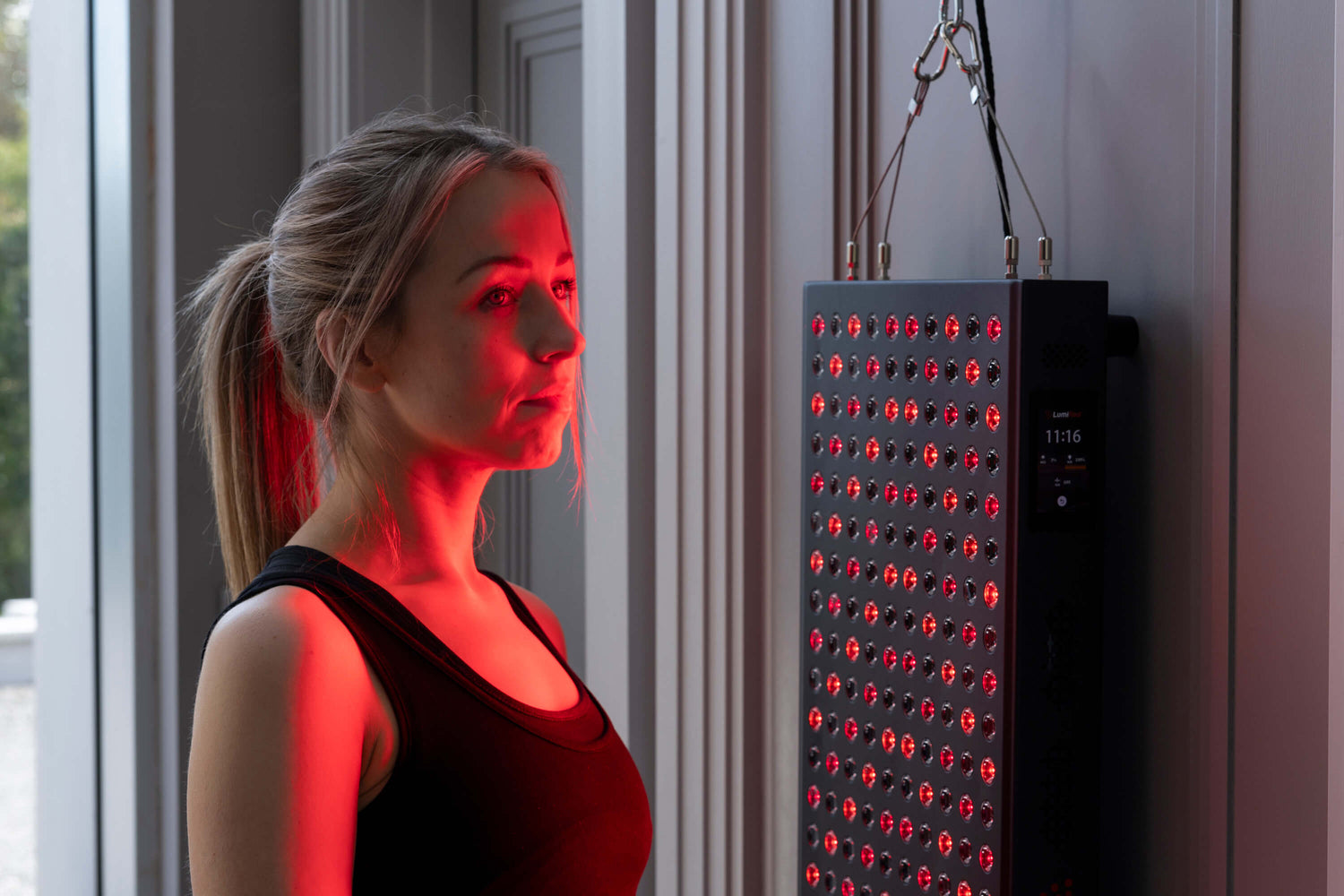Visualise a scenario in which mending broken bones and fractures could happen faster and easier using nothing but calming, gentle light. While conceivably sounding like a scenario featured in the movie "E.T.", red light therapy is swiftly becoming a breakthrough for bone healing and recovery. Whether you are an athlete who is trying to recover from an injury, someone with osteoporosis, or just hoping to learn about a new wellness technology, knowing how the science of red light therapy works could lead to faster and more effective healing of bones.
In this blog post, we'll summarise the benefits of red light therapy, how it works to heal bone, and what to look for in good red light therapy devices.
Key Takeaways:
- Red light therapy accelerates the healing of bone tissue. It does this by promoting the regeneration of cells and increasing collagen production.
- Red light therapy will decrease pain and inflammation, so it can be helpful with fractures, arthritis, and joint pain.
- With regular use, red light therapy may also improve bone density and, therefore, prevent bone loss and promote overall health.
- Choosing the right device is important - you want to get the correct wavelength of light, power, and size to get the best effect.
Benefits of Red Light Therapy
Red light therapy, also known as low-level laser therapy (LLLT) or photobiomodulation, has gained traction for its incredible health benefits. It works by penetrating deep into the skin and tissues, stimulating cellular activity to speed up recovery and regeneration. While most people associate red light therapy with skin health and anti-ageing, its impact on deeper tissues—like bones and joints—is just as profound.
Here are some of the major benefits of red light therapy:
-
Speeds Up Healing: Research suggests that red light therapy for bone healing can enhance bone regeneration by stimulating osteoblasts (bone-building cells). This is particularly useful for individuals recovering from fractures or bone surgeries.
-
Reduces Inflammation and Pain: Be it arthritis, joint pain, or a fresh injury, red light therapy for pain can considerably reduce discomfort and swelling.
-
Builds Density: Does red light therapy build bone density? The answer is yes. Research shows that regular use of red light therapy equipment can slow the loss of bone density and even stimulate new bone growth.
-
Non-Invasive and Drug-Free: Red light therapy provides a natural way to support your body's healing mechanisms, unlike painkillers and procedures like surgery.
-
Improves Circulation: Increased blood flow to the affected area means better nutrient delivery and waste removal, leading to faster recover
How Red Light Therapy Promotes Bone Healing?
The process of bone healing involves a myriad of biological reactions that require the activation of various cells, substances, and growth factors. Orthopaedic practices still rely on traditional methods like casting and immobilisation to stabilise the injury and facilitate a degree of healing. However, stabilisation does not speed up healing. Infrared light therapy for fractures helps facilitate and speed up the healing process.
Red light therapy works by stimulating the mitochondrial powerhouse of our cells and allowing the cell to produce adenosine triphosphate (ATP) better. The increase of ATP stimulates cellular repair, regeneration, and bone healing in this exercise.
Studies also indicate that red light therapy for broken bones promotes collagen synthesis, which promotes bone strength and flexibility. Furthermore, the capacity of light to stimulate stem cell activity enables new muscle and bone to grow better.

Best Practices for Using Red Light Therapy
To get the most benefit from red light therapy, it is crucial that you use the therapy correctly, so pay attention to these critical tips regarding session duration, frequency, and positioning.
-
Session Duration: Most of the research on red light therapy recommends around 10 to 20 minutes of treatment time for a targeted area. It doesn't really help to over-treat this area in hopes of speeding up the healing process, and it may even be uncomfortable afterwards.
-
Frequency of Use: Research has shown that using red light on a bone 3 to 5 times per week is a good target. Regularity is key, so if you find yourself missing treatments, you may see your results slowed down.
-
Positioning: Hold your device 2-6 inches from the area while treating the area, which will ensure you get the most red light into that area. Ideally, if you are using a red light panel, sit next to it or lie down and let the injury be exposed to the panel.
-
Avoid Clothing/ Barriers: Red light is most effective on bare skin. Stay sure that fabric and bandaging do not cover too much of the area you are treating.
-
Combine with Other Therapies: Pairing red light therapy with a healthy diet, calcium and vitamin D intake, and physical therapy can enhance overall bone healing results.
-
Be Patient: While some people notice pain relief within a few sessions, significant bone healing improvements may take several weeks of consistent use.
How to Find the Best Device?
With so many alternatives on the market, selecting the right red light therapy devices can become quite overwhelming. Keep the following consideration in mind when choosing one: Wavelength is important:
-
Wavelength: The most effective wavelengths for bone healing lie between 630-850 nm. Infrared light therapy for fractures requires deeper penetration, so very often, a near-infrared wavelength (800-850nm) is necessary.
-
Power and Intensity: when you find your device, confirm that it is powerful enough to give you the depth of penetration you need. Too weak, and it won't penetrate deep enough; too strong, and it will provide discomfort.
-
Size and Area of Exposure: If you plan on treating an area much larger than your hand, you will likely find having a full red light panel to be more effective than using a handheld device.
-
Ease and Use of the Device: If you have considered both portable and stationary devices, think about what kind of workouts you plan on performing and further which you would prefer to use in conjunction with therapy sessions.
-
Everything Tested: Finally, since you are looking for a device, ensure it has been tested and has mostly positive reviews from legitimate users.
Conclusion
Red light therapy is revolutionising the way we heal bones. The benefits are obvious, from increasing bone density to decreasing pain and inflammation. Whether you are recovering from an injury, dealing with arthritis, or just looking to build up your bones, red light therapy could be a life-changing, drug-free solution to add to your wellness routine.
With the right equipment and consistent application, you can use the energy of light to assist your body's natural healing mechanisms. As research continues to unfold, red light therapy for fractures and bone healing will become more relevant to the medical community, as well as individual health and wellness communities.
Feel The Recovery With LumiRed
LumiRed is the research-proven leader in red light therapy to support recovery. LumiRed products are designed to provide optimal bone healing, pain management, and enhanced blood circulation with meaningful absorption wavelengths. Improve your overall recovery time and way of life with the energy of red light, and start by purchasing LumiRed products!




